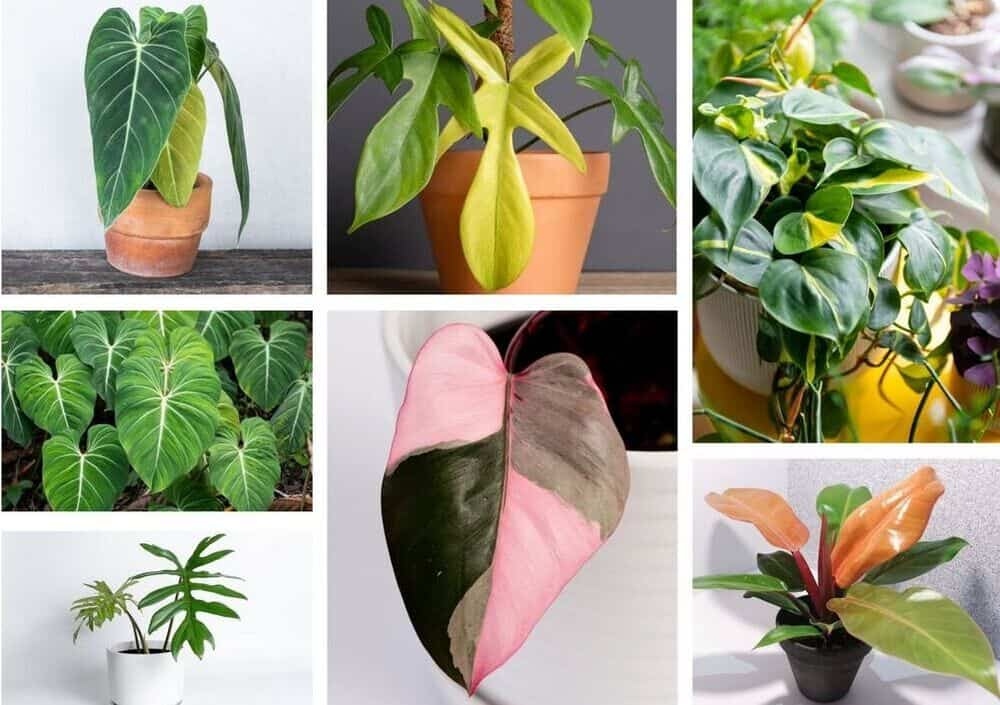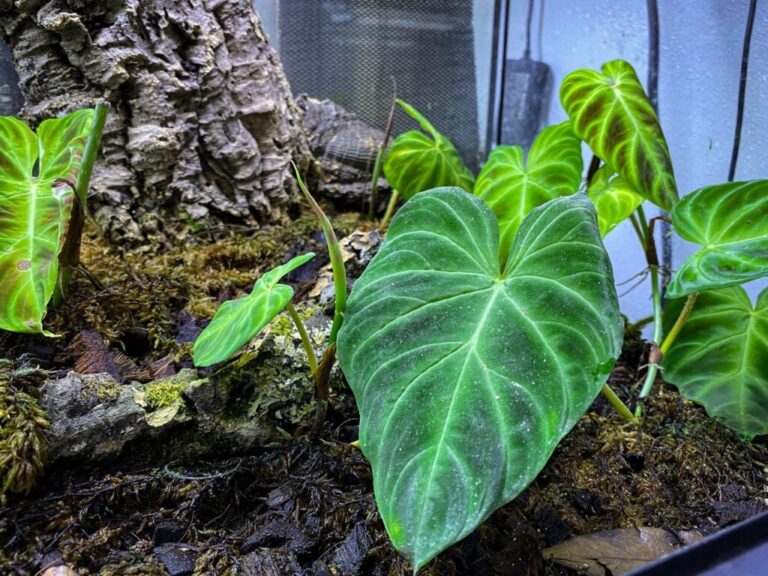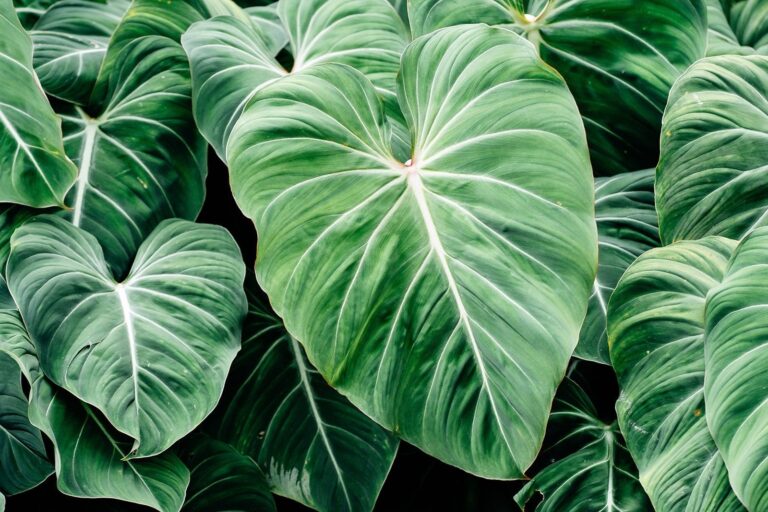Rare Philodendron Propagation: 7 Advanced Techniques for Challenging Species
What if your $500 Philodendron billietiae cutting could multiply into ten identical plants using laboratory-grade techniques that most collectors never discover? The difference between amateur failures and commercial success lies not in luck, but in understanding the species-specific propagation secrets that transform challenging philodendrons from propagation nightmares into reliable producers.
Rare philodendron species have unique challenges that are not yet covered by the standard houseplant propagation guides.
Critical Challenges in Rare Philodendron Propagation
Self-Heading vs. Vining Species Struggles
Self-headed philodendrons such as Philodendron gloriosum and P. ‘Pink Princess’ have difficulties in propagation, as they lack the ability to grow traditional vining stems. These are rhizomatic or dense clump-growing species, so mere stem cuttings are simply not feasible. But propagation demands that the ratio of critical root-to-shoot ratios be considered while maintaining critical root-shoot ratios without transplant shock because we can use division techniques in the process.
The development of adequate root systems in vining plants is an equally difficult challenge when growing slow-rooting varieties of this type. Philodendron melanochrysum is slower than some of the common ones since it requires 8-12 weeks to develop enough root systems. The timing may be lower, however if you contrast that with 2-4 weeks, you get 8-12 weeks with slow-rooting plants.
Rare Species-Specific Requirements
For each challenging species different methods are required:
Philodendron billietiae need tissue-culture protocols with accurate concentrations of hormone (1.5 mg/L BA for shoot induction, 0.5 mg/L NAA for rooting) to achieve commercial propagation rates.
Philodendron gloriosum is a rhizome-dominated grower; for every section, it needs at least 1 active growth point and 2 leaves to establish.
Philodendron verrucosum requires extremely high humidity (80-90%) for propagation and it roots better in sphagnum moss than in a traditional potting mix.
Advanced Propagation Methods for Challenging Species
Tissue Culture Micropropagation Protocol
To combat philodendron propagation, tissue culture is considered the gold standard, capable of commercial-scale production of genetically identical plants. The method consists of fourteen precise steps:
The shoot tips and explant preparation 0.5 cm are sterilized at the surface with 70% ethanol and sodium hypochlorite, and no debris is present in the final tissue, and the viability of the explants is maintained.
Hormone application sequence: Multi-stage hormone treatments accelerate certain developmental periods. The first culture samples the root culture media with 0.1 mg/L NAA, then 1 mg/L BA, then shoot induction media with 0.5 mg/L 2,4-D or TDZ, then finally rooting media with 0.11 mg/L IBA.
Cultures need 3000 lux light intensity, photoperiods of 16 hours and 25±2°C temperature, and achieving success exceeds 95% (when protocols are adhered to strictly).
Rhizome Division Methods in Self-Heading Species
Self-heading philodendrons propagate through close rhizome division, necessitating surgical precision and post-division monitoring:
Time for division: Divisions should be performed during the active growth seasons (spring/summer) of the plant so that new root systems can be quickly established. Winter division is avoided during slow metabolic cycles.
Section: Each division should have minimum one active growth point and two healthy leaves. Only small sections do not have adequate photosynthetic capacity for establishment.
Preservation of root system: When dividing, keep the root system as much mass as possible and meticulously peel back the soil and clean it up, cutting it through with a sterilized cutting instrument. Pathogen invasion is promoted when the roots are impaired and a smaller number of plants are successful.
Vining Species with Aerial Roots: Air Layering
Advanced air layering methods, like the one described above, resolve propagation problems for vining species such as Philodendron melanochrysum.
Notching Method: Establish 1/4-inch deep notches about 1/4″ below nodes to block auxin flow and stimulate particular locations for root formation.
Hormone Supplementation: Before coating with moist sphagnum moss, use concentrated rooting hormone (3000-5000 ppm IBA) directly on notched areas.
Environmental Optimization: Air layers should be treated with plastic wrap at 70-100% relative humidity at temperature of 25-30°C for the growth of roots.
Environmental Control Requirements
Correct Temperature and Humidity Control
Challenging philodendron species need to have selective environment conditions in a tight environment for propagation including the following:
Temperature Range: When undergoing active propagation, keep 25-30°C. These conditions result in drastically decreased cellular activity if temperatures are below 20°C, and increased temperature over 32°C to strain young tissues that are growing to become mature.
Humidity Control: For sensitive species like P. verrucosum, target 80-90% relative humidity. Use ultrasonic humidifiers and/or enclosed propagation chambers with accurate hygrometer monitoring.
Ventilation Balance: Gently circulate air so as not to cause fungus, and at the same time keep it at relatively high humidity. Periodic use of small fans will deter stagnation which allows pathogen growth in the system.
Light Intensity and Photoperiod Requirements
Light Intensity: Employ a full-spectrum LED grow apparatus and apply a 35-50 μmol/m²/s light intensity during tissue culture phases. Increased intensities will photoinhibit developing tissues.
Photoperiod: Use 16-hour maximum light hours and 8-hour darkness period for cellular respiration and hormone formation.
Light Distance: Place lights 12-18 inches above the propagation medium to avoid heat stress and ensure light penetration.
Advanced Hormone Applications
High Species-Specific Hormone Levels
For troublesome species, generic rooting hormone applications don’t work. The optimal concentrations can be greatly different:
Philodendron billietiae: 1.5 mg/L BA (100% shoot induction), followed by 0.5 mg/L NAA for root production = 5.7 roots per shoot.
Philodendron ‘Pink Princess’: 2000-3000 ppm IBA is effective and applied as a quick-dip rather than powder formulations for uniform absorption.
Slow-rooting varieties: Philodendron melanochrysum thrives in prolonged hormone exposure treated in diluted solution (500-1000 ppm) over 48-hour period compared to routine quick treatments.
Timing and Application Interventions
Preliminary Procedures: Soak cuttings in dilute hormone (100-200 ppm) solutions for 12-24 hours pre main application, for cellular responses.
Timing of Application: Applying hormones early when cellular uptake rates are highest is very practical for early morning. Do not apply in the evening, during which transpiration rates decrease.
Concentration Rates: For later root development, use lower concentrations progressively, as hormone toxicity is counterproductive during natural growth of roots.
Timelines and Optimizing Success
A Simple Framework for Realised Timeline
Problematic philodendron propagation is more difficult than propagation for common varieties:
Rooting: 4-8 weeks for difficult species vs 2-4 weeks for more common varieties. Philodendron melanochrysum usually has initial roots at 6-8 weeks.
Establishment: Give 12-16 weeks before success can be considered from a propagation standpoint. Many failures appear when the transplants are premature, disrupting developing roots.
Regenerate GROWTH: Expect 6-12 months to allow transplants to return to normal rates of growth. Sluggish growth at the outset is not a sign that nothing is done but information about an energy allocation aimed for growth, primarily through a plant’s root system.
Optimization of Success Rate Strategies
Multiple Specimens: For a typical 20-30% failure rate of difficult species, multiply multiple specimens at a time.
Environmental Monitoring: Employ data loggers that measure temperature, humidity, and light content. Constant conditions = 40-60% greater chances of success.
Gradual Acclimatization: Slowly reduce the humidity every 4-6 weeks, not suddenly reduce it to the extremes and shock the developing plants on a large scale.
Commercial Viability Assessment
Production Economics
Prognostic commercialization of difficult philodendrons involves consideration of production costs relative to the market price:
The TSC costs (lab setup) = $5,000-15,000 initial set up on general lab equipment; per plant, this number falls to $0.50-1.00 per plant if expanded to large size.
Time of investment: Rhizome division creates 2-4 plants per year with mature specimens, while tissue culture generates 50-100 plants in a month from single explants.
Market Positioning: Rare specimens such as tissue-cultured Philodendron billietiae command $50-200 per plant, justifying extensive investments to propagate it.
Scaling Considerations
Laboratory Requirements: Tissue culture facilities require sterile conditions, special equipment, and trained personnel. They can operate at $2,000 to 5,000 per month for smaller operation.
In order to optimize quality, ensure genetic consistency through the judicious choice of explants and adherence to the hormone guide. Commercial value is greatly lowered by variance.
Market Timing: Pair the propagation cycles with a peak in demand with collection in spring and early summer when the collector season is intense.
Identifying and Resolving Common Disruptions
Figuring Out What’s Wrong with Propagation
Prevent Root Rot: Add at least 50% perlite in a propagation medium to help maintain oxygen supply. Root rot is responsible for 70% of plant propagation breakdown in the difficult species type.
Hormone toxicity symptoms: Yellowing leaves, not growing well, and callus show there are too many hormones. Flush media with sterile water and reduce the concentration by half.
Contaminated: Mold or bacterial growth should be isolated immediately and sterilized. Discard contaminated specimens to keep it from spreading to healthy propagations.
Recovery for Stressed Specimens
Adjust the Environment: Slowly change conditions, by degrees. Sudden environmental changes stress developing tissues out of bounds.
Nutrient intake: Not fertilized at root level of initiation. Dilute and start application only after visible root development, usually 8-12 weeks after propagation.
The Patience Protocol: Resist the urges of an intervention. Many apparently failing propagations recover when left unchanged but maintained in optimum condition for an extended period.
Key Sources:
Analyzing The Tissue Culture of Philodendrons | Plant Cell Technology
Philodendron Gloriosum Care and Propagation Guide | Ohio Tropics
Philodendron Pink Princess Propagation: 3 Easy Methods | Ohio Tropics
How to Propagate a Philodendron 2 Ways | The Spruce
A Comprehensive Guide to Propagating Philodendrons | TerraFlora Global
Propagation tips for rare and exotic plants: A specialist’s guide | Growcycle
Micropropagation of lacy tree philodendron | American Society for Horticultural Science





